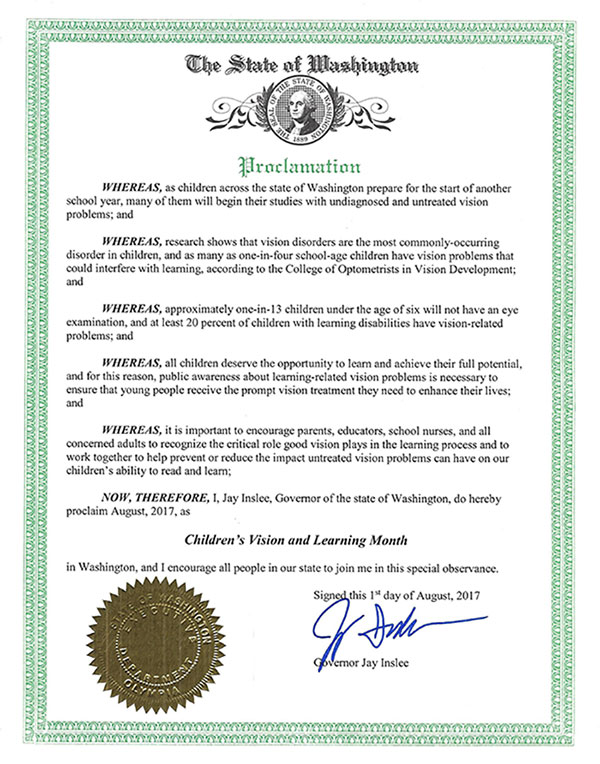
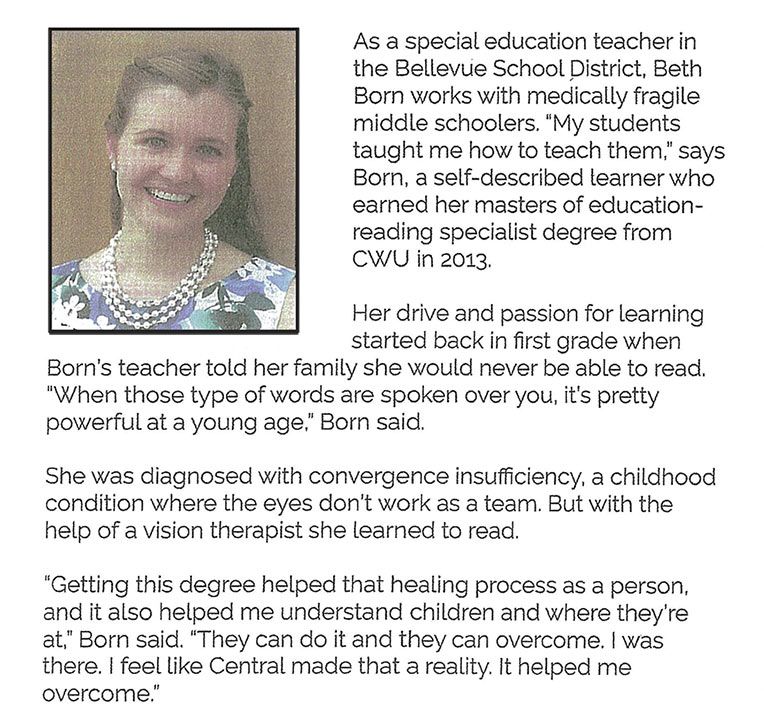
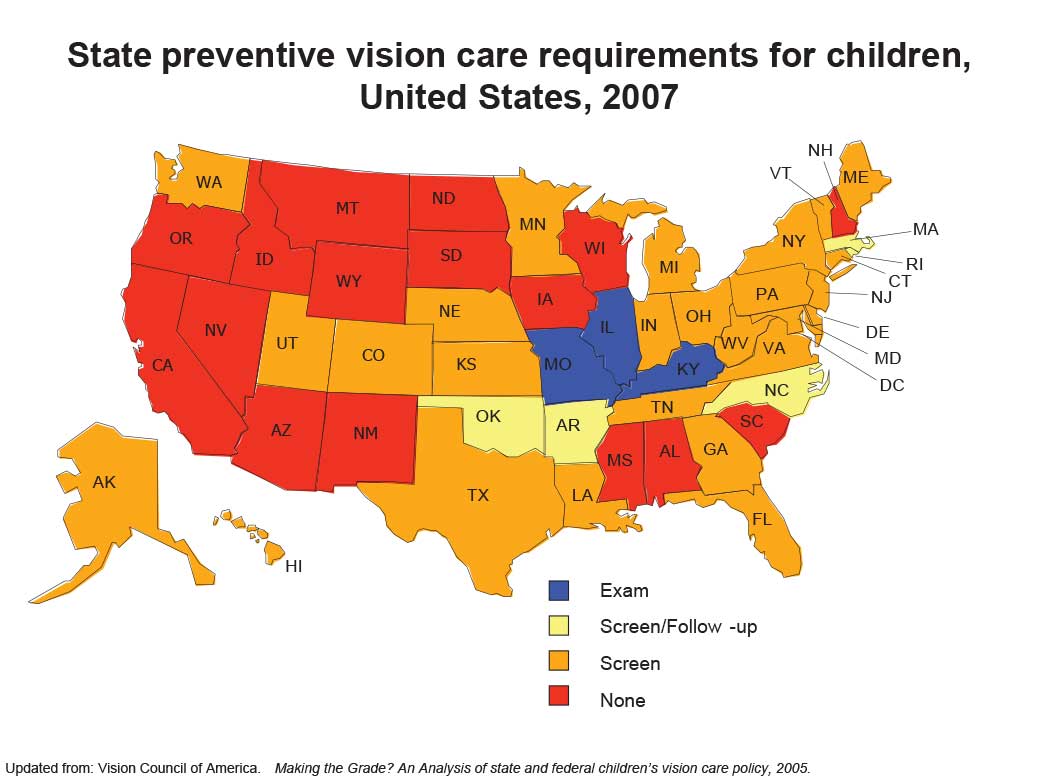
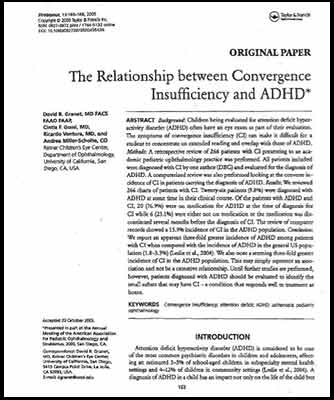
Here are some important excerpts from the study:
“The symptoms of convergence insufficiency (CI) can make it difficult for a student to concentrate on extended reading and
overlap with those of ADHD.”
“Some of the symptoms of ADHD overlap those of convergence insufficiency (CI).
Comparing the Convergence Insufficiency Symptom Survey... with the DSM-IV criteria
for ADHD, we noted that 5 of the 9 symptoms
of inattention could also be applied for CI (symptoms 1, 2, 4, 6 and 8 as follows).
”
You can find abstracts of the study online at:
www.ncbi.nlm.nih.gov/pubmed/16361187
and http://www.add-adhd.org/convergence_insufficiency.html
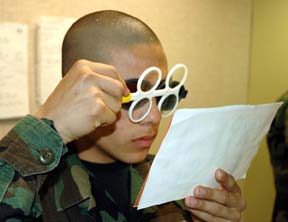
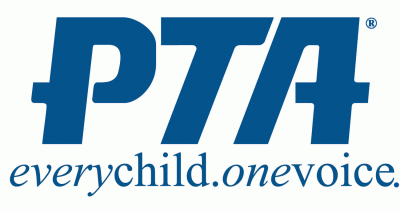
"Whereas, it is estimated that more than 10 million children (ages 0 to 10) suffer from vision problems; and
Whereas, many visual skills are necessary for successful learning in the modern classroom; and skill deficiencies may contribute to poor academic performance; and
Whereas, typical "vision" evaluations/screenings only test for a few of the necessary learning related visual skills (distance acuity, i.e. 20/20 eyesight), leaving most visual skill deficiencies undiagnosed; and
Whereas, learning related vision problems, when accurately diagnosed, can be treated successfully and permanently; and..."
You can find the full Resolution online at: www.optometrists.org
Download the 1999 resolution here
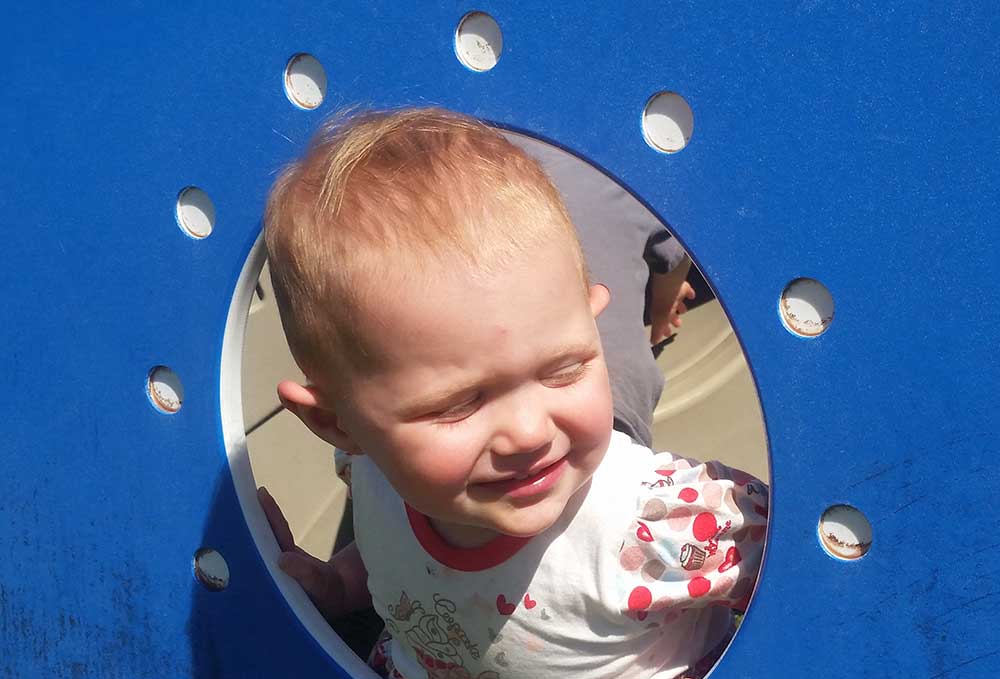

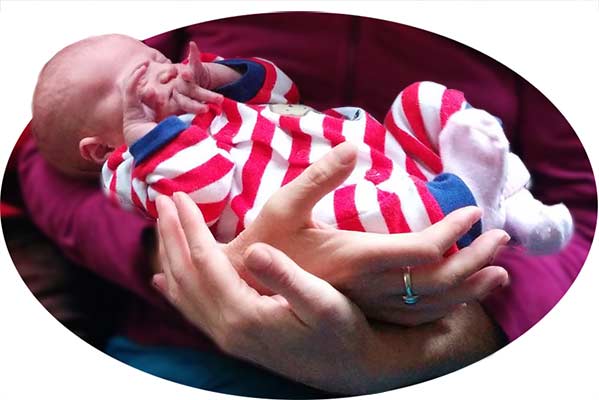
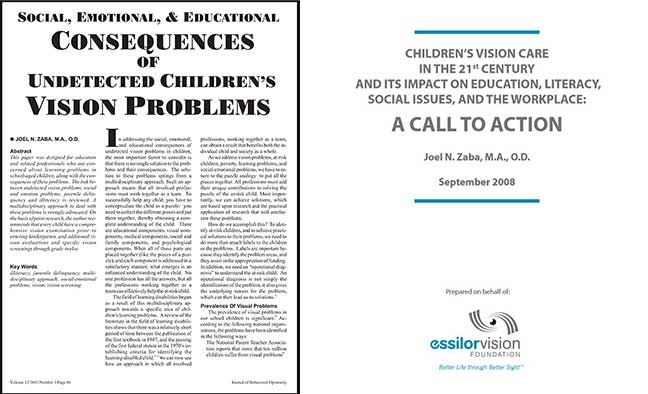
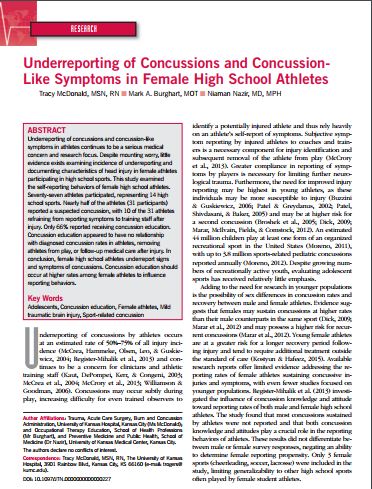
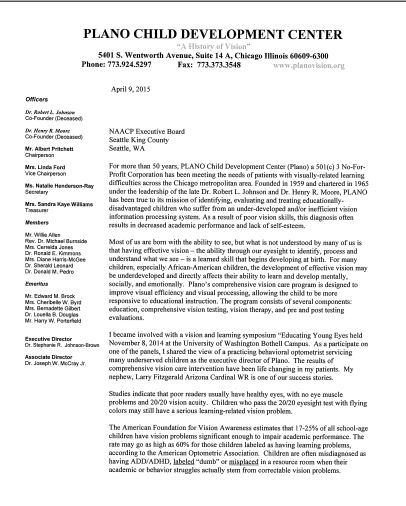

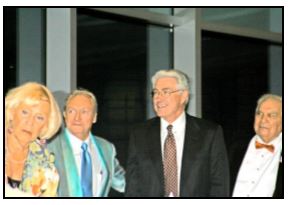


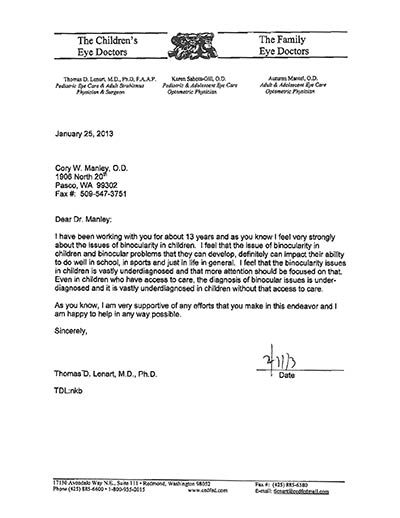
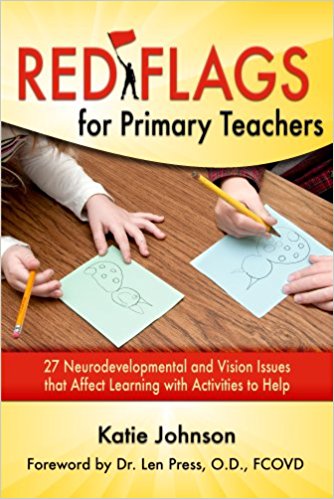
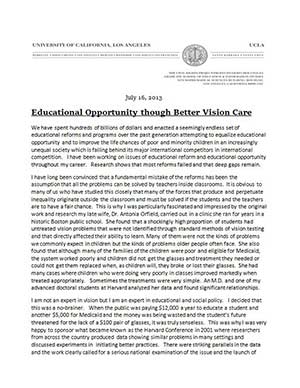
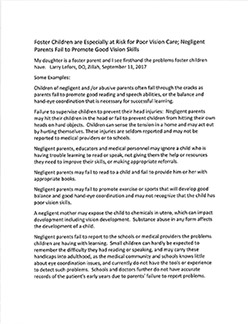
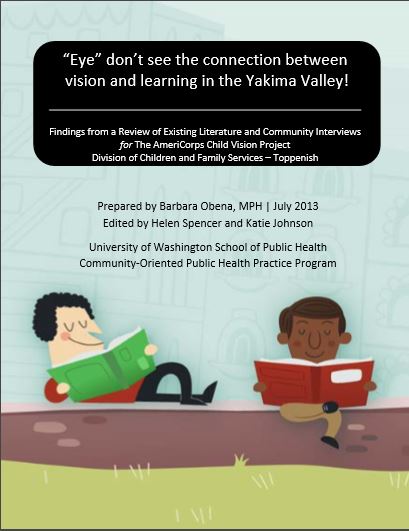
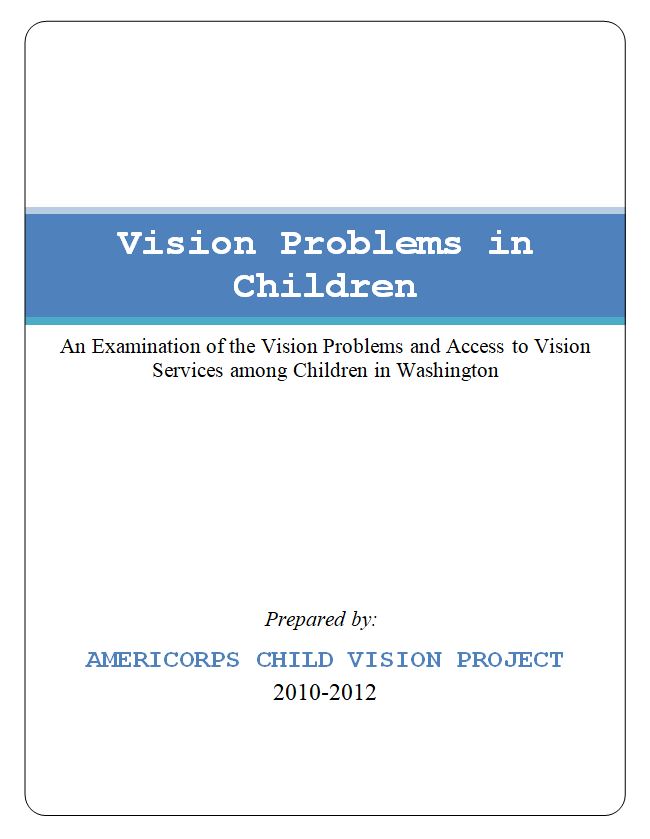
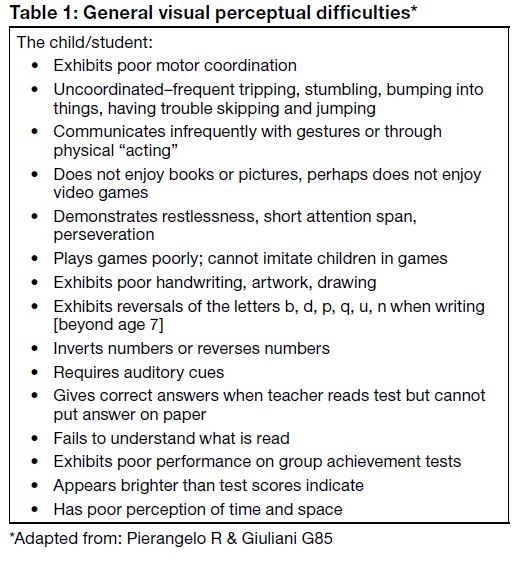
Educators work very hard to help students solve the cognitive problems that impede their learning. Sometimes, the authors argue, it's the problems we can't "see" that need to be fixed first... schools need to address a much more basic issue affecting learning for many students, especially those who live in poverty. This is the issue of undetected and uncorrected vision problems.